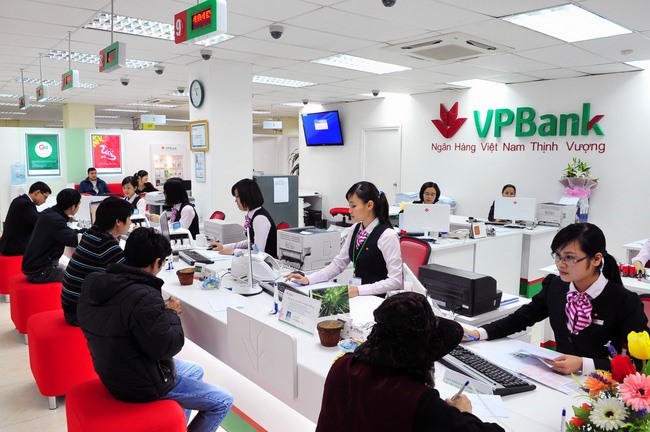Viet Nam Prosperity Joint Stock Commercial Bank (VPBank) plans to increase its current charter capital from VND15.7 trillion (US$690 million) to VND27.8 trillion in 2018, the bank announced at its shareholders’ meeting held on Monday in Ha Noi.

Viet Nam Prosperity Joint Stock Commercial Bank (VPBank) plans to increase its current charter capital from VND15.7 trillion (US$690 million) to VND27.8 trillion in 2018, the bank announced at its shareholders’ meeting held on Monday in Ha Noi.
The plan for raising charter capital includes the following mechanisms: issuance of shares for dividend payments instead of cash, issuance of shares using reserves to supplement charter capital, issuance of shares to VPBank staff under the Employee Stock Ownership Plan (ESOP) programme, private shares placement for local and foreign investors and the distribution of surplus capital.
The bank plans to make dividend payments in the form of common shares by utilising retained profits after allocating profit in 2017 and issuing common shares to raise capital from owner’s equity.
In the second quarter of 2018, VPBank also plans to issue shares worth nearly VND337 billion—equivalent to about 1.7 per cent of the bank’s charter capital at the time of issuance—to its staff under the ESOP programme.
In third quarter of 2018, the bank will buy over 73 million dividend preferred shares, with capital sourced from the firm’s capital surplus (VND1.3 trillion) and development investment fund (VND1.2 trillion).
VPBank will conduct private placement for local and foreign investors to raise charter capital. The maximum offer is about 15 per cent of total common shares at the time of issuance.
The last mechanism to raise charter capital will be implemented in the fourth quarter by distributing bonus shares from capital surplus gains after the 2017 private placement. The total surplus distributed to common shareholders is expected to be more than VND4.6 trillion. After surplus distribution, the charter capital will be raised to VND27.8 trillion.
With the tentative VND12 trillion capital surplus as results of the abovementioned actions, VPBank plans to use VND8.500 billion to raise mid- to long-term capital to serve credit growth.
At this meeting, VPBank’s shareholders also approved the bank’s business plan for 2018. Main targets include reaching total assets of VND359.4 trillion, customer deposits and valuable papers of VND241.7 trillion, a non-performing loan ratio below 3 per cent and profits before tax reaching VND10.8 trillion.
According VPBank, 2017 is the final year of the bank’s five-year transition period from 2012-2017.
By the end of fiscal year 2017, VPBank was named one of Viet Nam’s top five joint-stock commercial banks and one of the country’s top three retail joint-stock commercial banks.
As of December 31, 2017, the bank’s total assets reached VND278 trillion, outstanding loans reached VND196.7 trillion and capital mobilisation reached VND199.7 billion.
VPBank’s total operating income in 2017 reached VND25 trillion, up 48 per cent from 2016, recording the highest level ever achieved by the bank, helping to bring the bank’s compound annual growth rate (CAGR) to 51 per cent.
Before-tax profit in 2017 reached VND8.1 trillion, the highest level ever, up 65 per cent year-on-year and meeting 120 per cent of the yearly target.
The non-performing loan ratio was controlled at less than 3 per cent as regulated by the State Bank of Vietnam.
Also in 2017, the bank’s charter capital has increased from VND9.2 trillion to VND15.7 trillion.
An important milestone of VPBank in 2017 was the listing of more than 1.3 billion shares on the Ho Chi Minh Stock Exchange (HOSE) with the reference price of VND39,000 per share.
As of March 16, 2018, VPBank’s share price was VND64,300 per share and market capitalisation reached VND96.3 trillion, ranking fourth among the listed banks.
The bank said it would continue to maintain its retail banking strategy in 2018, specially focusing on digitalisation of financial products and services to better meet customers’ demand and create new growth momentum.
It will also enhance association with financial technology companies and strategic partners to create a diversified financial ecosystem, which could provide better products to all market segments. — VNS





